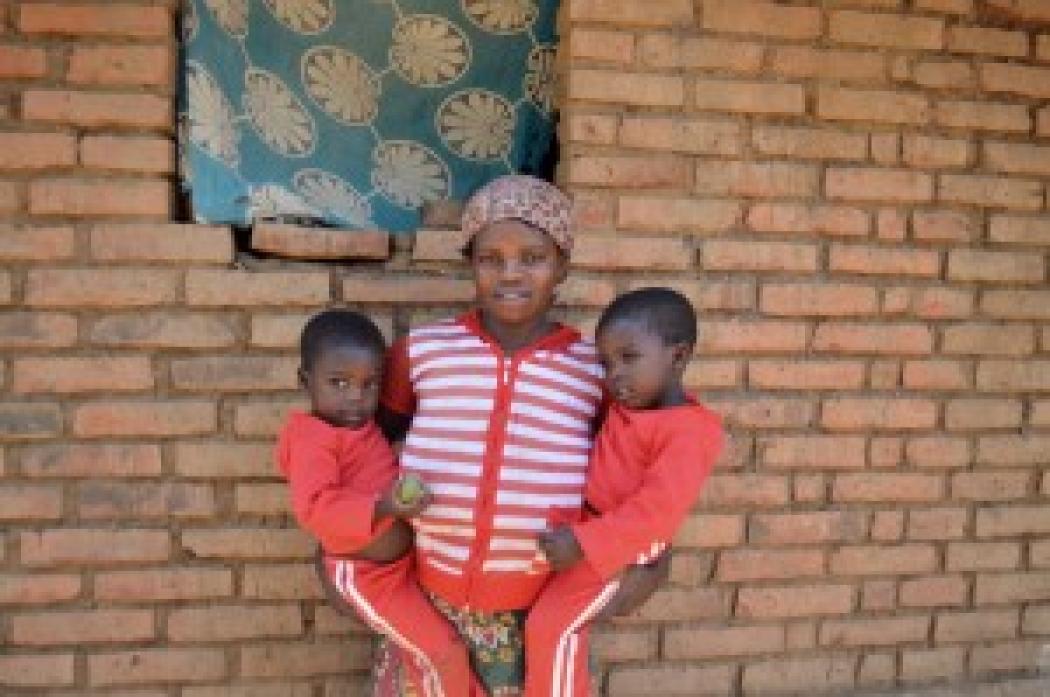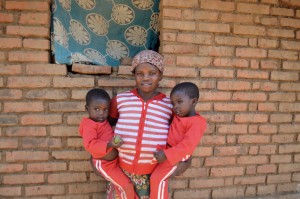What to Do about Tuberculosis in Pregnancy

By Naomi Kalemba , Jhpiego
Mwanipela Village, Malawi — “I was very concerned,” the mother said, keeping an eye on her twin sons playing beside her. “I thought I was going to die from this disease, and I was concerned that my babies would die too.”
Eliza Kayange wasn’t talking about something untreatable or even incurable. She was talking about tuberculosis (TB), a preventable disease that still kills an estimated 1.5 million people every year.
“When I was pregnant, I was coughing a lot. I was also experiencing dizziness and shortness of breath. It was so hard to breathe,” said Kayange. So she went to her village’s health center, where her health surveillance assistant had the training to recognize, test and diagnose TB.

Empowering Health Workers to Recognize TB in Pregnancy
Many women are not as fortunate. In 2014, TB killed an estimated 480,000 women—placing the disease among the top five causes of death for women of childbearing age. Many pregnant women are undiagnosed or misdiagnosed because TB symptoms are similar to typical complaints during pregnancy.
Ensuring that frontline health workers have the necessary skills to recognize TB in pregnancy is a critical step in combatting the disease. Jhpiego aims to reach pregnant women with TB care that’s integrated with maternal health or HIV prevention and treatment services, as part of its work in supporting the global goal of eliminating TB.
In Malawi, Jhpiego is working with the Ministry of Health to ensure that women who attend routine antenatal care at their health facility are screened for TB and, if necessary, that they receive quality treatment for TB in pregnancy, through the five-year Support for Service Delivery-Integration Services Project, funded and supported by USAID.
Why TB in Pregnancy Is Especially Dangerous
When a mother has TB, it’s dangerous not only for her, but also for her baby. Women infected with TB are twice as likely to have a premature or underweight baby, and the baby can be born with congenital TB.
Multi-drug resistant TB, which is resistant to the two most potent drugs used to treat TB disease, further exacerbates the risk that pregnant women can face. There is a conspicuous lack of treatment guidelines for women with multi-drug resistant TB, leading to few options for the expectant mother: delaying treatment until after the pregnancy, terminating the pregnancy and beginning immediate treatment, or continuing treatment without knowing all of its effects. None of these are optimal options for women or their babies.
Prompt, accurate diagnosis and timely treatment of TB—like what Kayange received—can save women and their children. This is why frontline health workers are such a critical component of combatting the disease.
Today, Kayange and her boys are healthy. Her health provider gave her medication, instructed her to follow a healthy diet to support her recovery and told her to breastfeed exclusively for six months. She was also taught proper coughing etiquette to prevent the spread of the illness to family and friends.
On World TB Day – March 24 – we celebrate the health workers who make successes like Kayange’s safe, healthy birth possible, and push ahead for the millions more who need that same care.
